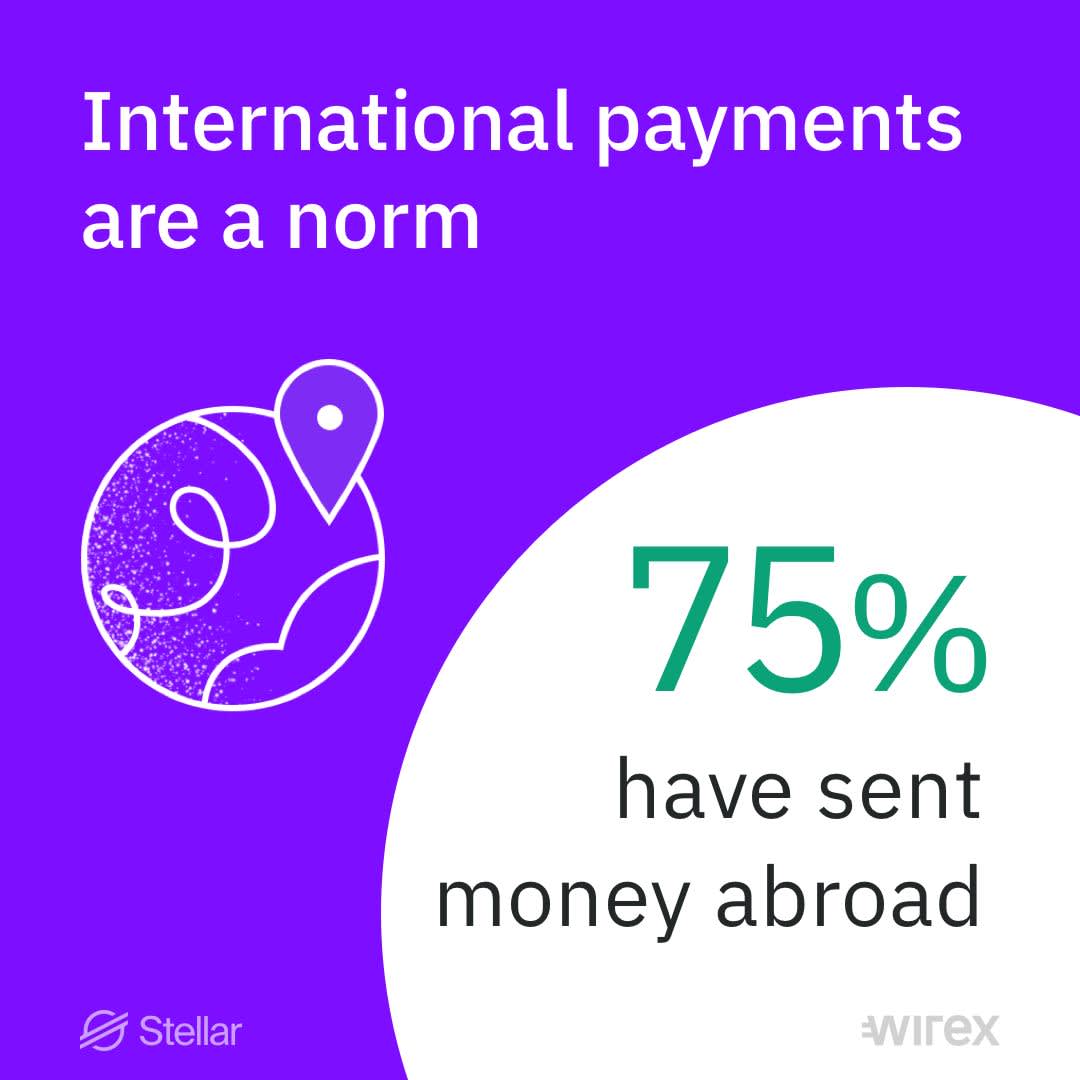Wirex recently carried out research with Stellar into crypto adoption attitudes and habits, which was published in a brand-new report last week. Over the coming weeks, we’ll be publishing articles by senior stakeholders around the business, giving insights into different topics, on our blog. We begin with a discussion by Martin Best, Chief Marketing Officer of Wirex, about why he thinks our research shows that traditional payments with banks are outdated and there’s a need for a solution using crypto.

Crypto: A Product-Market Fit?
Three factors will drive the process and determine whether cryptocurrencies can solve this problem in reality:
- Regulations need to allow for it across global markets, not only regional ones
- Established protocols and systems that allow open access and participation while maximising safely must be developed
- The role of companies such as Wirex and Stellar in making a tangible, transparent and simple case for cryptocurrencies in a way that mainstream users will be open to absorbing.
Go to YouTube or LinkedIn and look for any tech founder/leader fireside chat-style talk (think Slush, Money 2020 etc.) and you’ll soon enough hear two themes come up; ‘the problem we solve’ and ‘product-market fit’. If fintech is about disruption and improvement, then the leaders of these businesses need to explain why and how their solution beats the incumbents. Much of the typical dialogue is focused on why big, bulky and slow institutions that have ruled the waves for 200+ years of banking are seemingly unable to offer a solution that a two year old startup can apparently do with ease. But why is it? Surely, big banks with billions of $ in profit should logically be able to address and respond to these issues.
One such area of open discussion is cryptocurrency adoption; whether it ‘solves a problem’ at all, and if products can be made to safely and appropriately ‘fit’ a market need. Wirex and Stellar Development Foundation’s (SDF) recent crypto adoption report is based on data from almost 4000 people in just under 90 countries and attempts to answer that question. Wirex (a crypto friendly payment app linked to a debit card) and Stellar (blockchain-oriented technology and infrastructure) have a desire to advance the mainstream adoption of cryptocurrency and bridge the gap between blockchain and traditional economies. But who needs this and why?
Migrants need better options to send money home
One audience clearly in need of a better solution would be migrants, who traditionally send money from a developed country to a developing one. The UK-based Migration Observatory data suggests that a typical overseas remittance payment from the UK is an eye-wateringly high 7%.

Source: Migration Observatory briefing on migrant remittances to and from the UK
Combining that with the Wirex and Stellar data that suggests that the ‘sweet spot’ of international money transfer for their users is 1%, it shows that there’s clearly a large gap between expectations and reality that cryptocurrency payments could fill.
It’s not just about migrants - expats need solutions too
Earning higher incomes and adding critical skills to the countries they work in, expats are estimated to number over 65 million according to consultancy Finaccord. While less likely to make micro payments, these consumers typically send large amounts less frequently to and from their ‘home’ country while working overseas. Here’s the paradox - while many will live and work in developed countries where their ‘home’ bank may exist, fees associated with linking accounts over national borders remain a premium. For most banks, these higher net worth individuals are a source of net income rather than an audience to cater and reduce prices for.
From the Wirex/Stellar report, it’s clear that migrants and expats could both benefit from alternatives. Those that are already aware of cryptocurrencies overwhelmingly see them as a viable option, as the graph below shows.

Source: ‘The Future of Money: Cryptocurrency Adoption in 2021’ report by Wirex and Stellar
But will cryptocurrencies really ‘fit’ these consumers and their needs?
Here’s why it might happen; traditional banks may have the resources, but they lack the speed. Often born from several acquisitions and burdened by multiple regulatory obligations, they simply cannot meet the need to simplify processes and reduce costs with their infrastructure. 50% have admitted struggling with this issue. While the profit opportunity is there, cross-border payments will only ever be a small part of most big banks’ balance sheets. The value for smaller, mono-focus fintechs are significant enough to make the segment attractive, meaning that more cryptocurrency options will evolve for this purpose.
The Wirex/Stellar report highlights that around 63 million people worldwide are already using cryptocurrencies, which is roughly the same population of Italy or France. According to Findexable’s 2020 report, by 2022, 60% of global GDP will be digitised, meaning digitised payments will move from a niche interest to a global mainstream one. As both B2B and B2C payments become digitised, the market will open up to more opportunities for innovation to larger pools of consumers.
The big hurdle - making the fit ‘real’, not ‘hypothetical’
Few can argue against the theoretical benefits that decentralisation offers in moving value from one jurisdiction to another at minimal cost. The issue is how to make it work in practise. The Wirex/Stellar report highlights an issue of awareness; while many people are aware of crypto assets, few understand or have even heard of stablecoins. Ironically, stablecoins may in fact be one of the best means to move fixed amounts from one currency to another, and you can read more about there here.
For the benefit of consumers, adding cryptocurrencies as a viable option can only be a good thing for international cross border payments.
